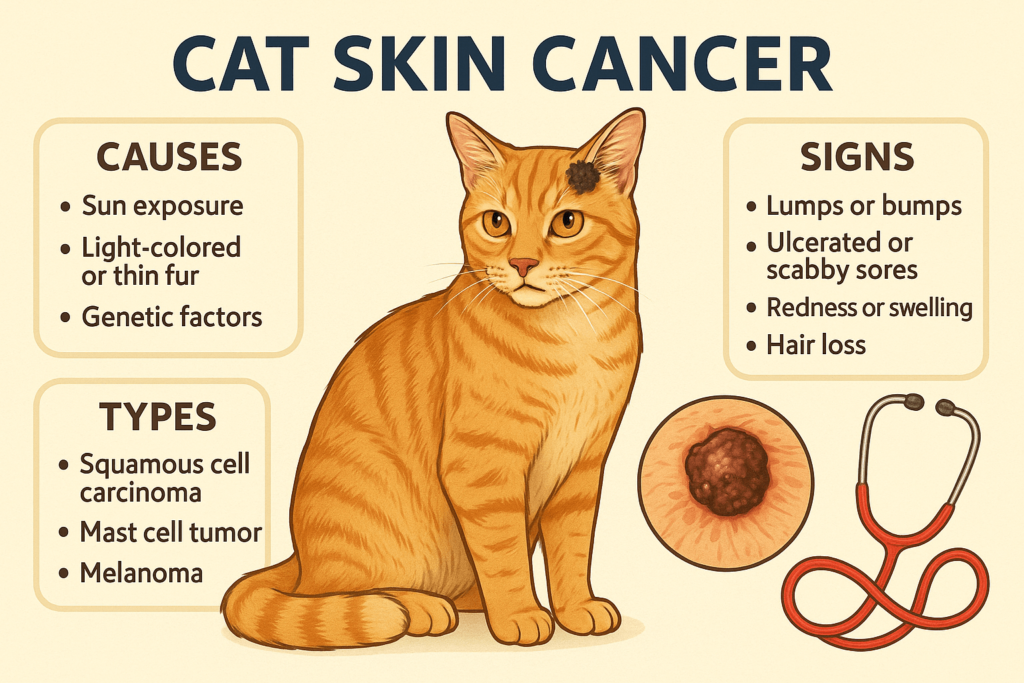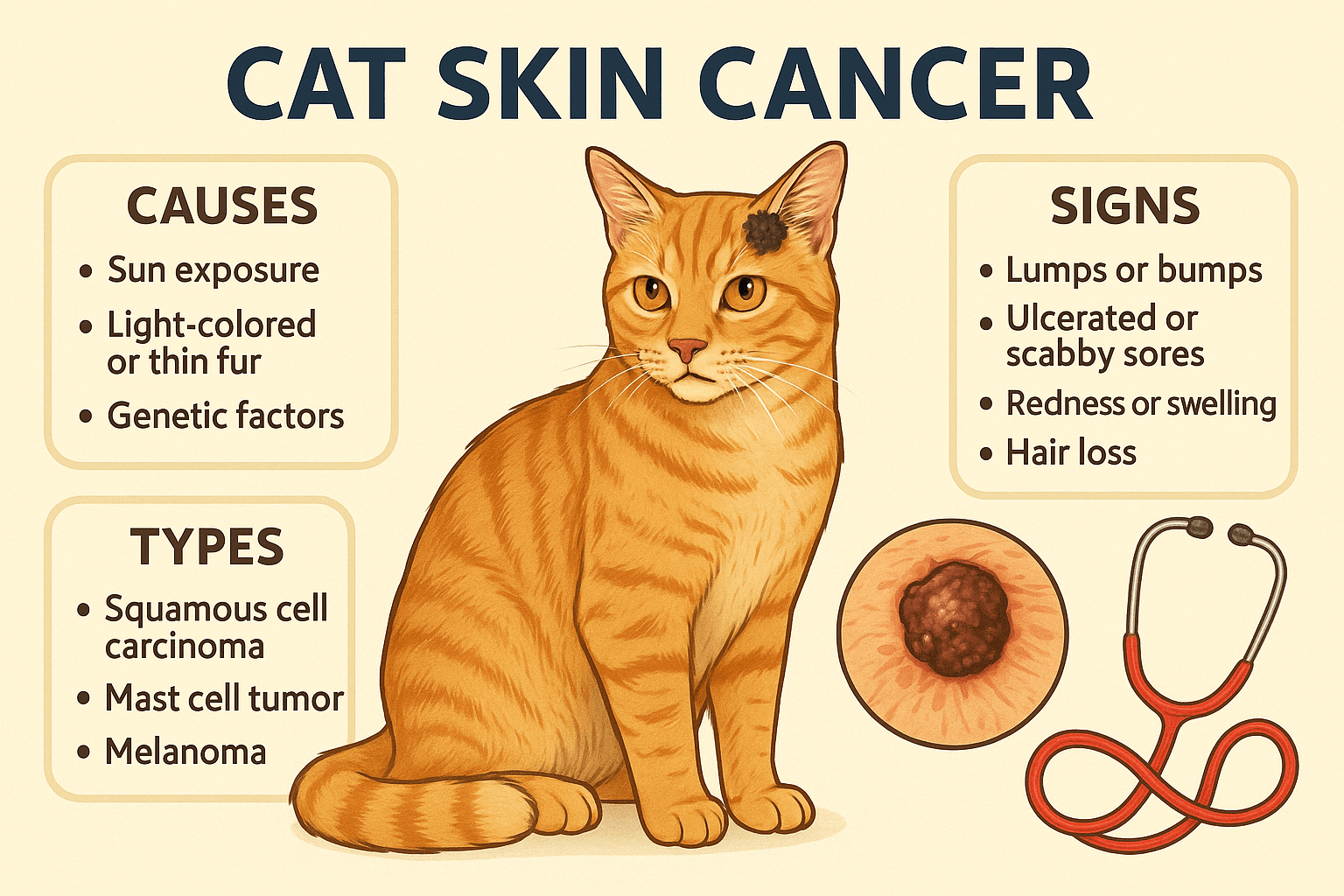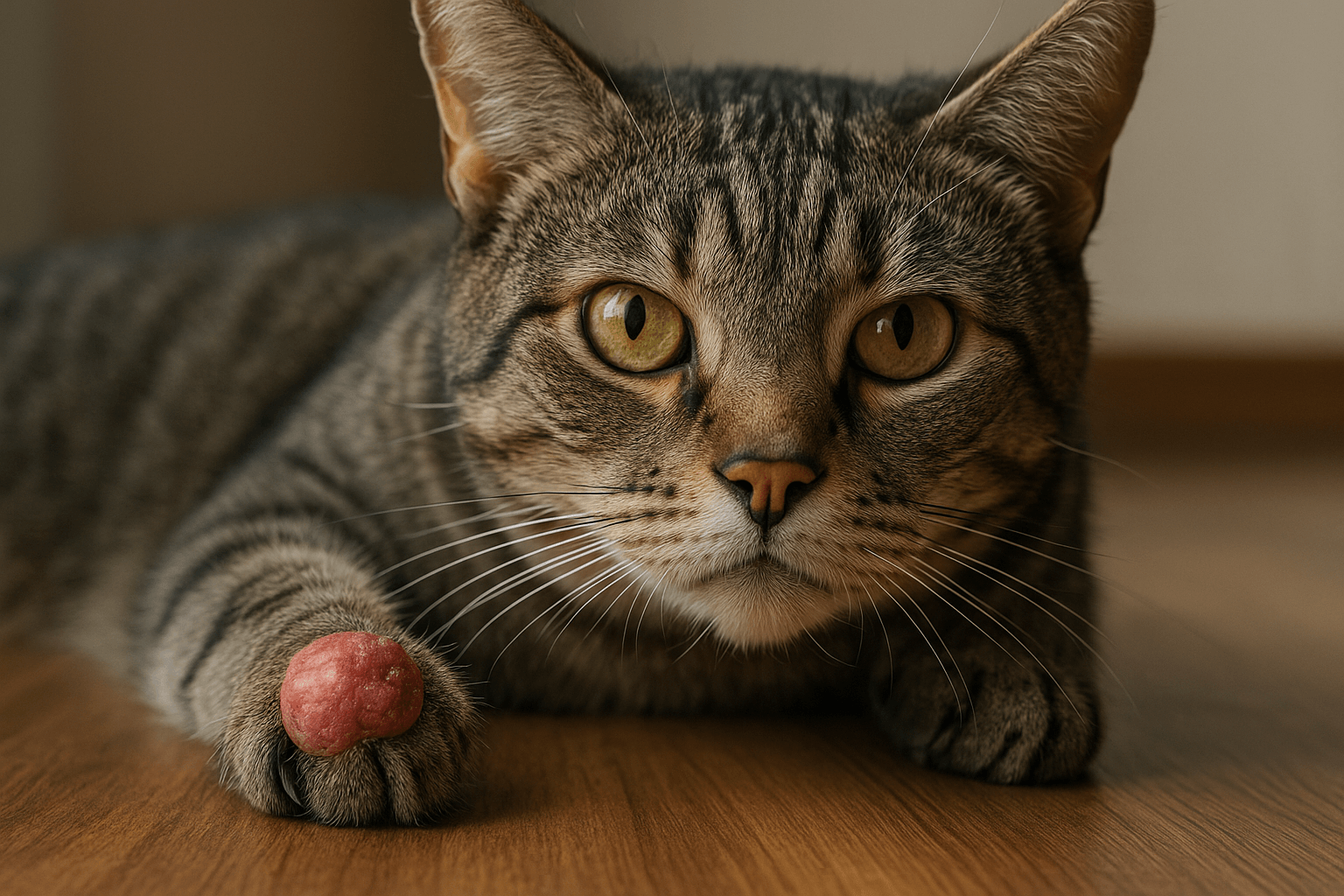Understanding Cat Skin Cancer: Causes, Symptoms, and Treatment
Cat skin cancer is a serious but often overlooked health concern for feline companions. While cats are known for their resilience, their skin can be vulnerable to various environmental and genetic factors that increase the risk of developing cancer. Early detection and proper care are crucial in managing this condition effectively. Whether you’re a new cat owner or a seasoned pet parent, understanding the signs, causes, and treatment options for cat skin cancer can make all the difference in ensuring your furry friend’s well-being. Let’s explore everything you need to know about this important topic.
Expert Insight on Cat Skin Cancer
“Skin cancer describes cancer affecting the outer skin (epidermis), or the tissue layers immediately below it. Just as in humans, the exact cause of cancer in cats is unknown. Some cat breeds are more likely to develop cancer.”
Common Types of Cat Skin Cancer
Skin cancer in cats can manifest in different forms, each with unique characteristics and risks. Recognizing these types is essential for early intervention and effective treatment.
Squamous Cell Carcinoma:
This is one of the most common forms of skin cancer in cats, often caused by prolonged sun exposure. It typically affects areas with little fur, such as the ears, nose, and eyelids.Melanoma:
Melanoma in cats usually appears as dark, irregularly shaped lesions on the skin or inside the mouth. Though rare, it can be aggressive if left untreated.Basal Cell Tumors:
These tumors are generally benign but can become problematic if they grow large or interfere with surrounding tissues. They often appear as raised, hairless bumps.Mast Cell Tumors:
Mast cell tumors originate in the skin and can vary in severity. They may cause redness, swelling, or ulceration in affected areas.Fibrosarcoma:
Often linked to vaccine injection sites, fibrosarcoma is a malignant tumor that requires prompt veterinary attention due to its invasive nature.
Understanding these types of skin cancer helps cat owners identify potential issues early and seek appropriate care for their pets.

Signs and Symptoms to Watch For
Detecting cat skin cancer early can significantly improve treatment outcomes. Keep an eye out for these warning signs that may indicate a problem.
Unusual Lumps or Bumps:
Any new growths, especially those that change in size, shape, or color, should be examined by a veterinarian.Persistent Sores or Ulcers:
Wounds that don’t heal within a reasonable timeframe could signal underlying issues, including cancer.Changes in Skin Color or Texture:
Discoloration, scaling, or thickening of the skin may point to abnormal cell growth.Excessive Licking or Scratching:
Cats often lick or scratch areas that are irritated or painful, which could indicate a tumor or lesion.Weight Loss or Behavioral Changes:
While not directly related to the skin, systemic symptoms like weight loss or lethargy may accompany advanced stages of cancer.
By staying vigilant and addressing these symptoms promptly, you can ensure your cat receives timely medical attention.
Check this guide 👉Understanding Cat Skin Conditions: Best 7 Health Tips!
Check this guide 👉How Can I Soothe My Cats Itchy Skin? Best 7 Health Tips!
Check this guide 👉What to Do About a Hole in Your Cats Skin: Best 7 Tips!
Preventive Measures | Treatment Options |
|---|---|
Limit sun exposure for light-colored cats | Surgical removal of tumors |
Regularly inspect your cat’s skin | Radiation therapy for localized cancer |
Maintain a healthy diet and lifestyle | Chemotherapy for aggressive cancers |
Avoid unnecessary vaccinations | Cryotherapy to freeze and remove lesions |
Schedule annual vet check-ups | Medications to manage pain and inflammation |
Risk Factors That Increase the Likelihood of Skin Cancer
Certain factors can make some cats more susceptible to developing skin cancer. Identifying these risks allows you to take proactive measures to protect your pet.
Excessive Sun Exposure:
Cats with light-colored or thin fur are at higher risk of developing squamous cell carcinoma due to UV radiation.Age and Genetics:
Older cats and certain breeds, such as white cats, are more prone to skin cancer due to genetic predispositions.Environmental Toxins:
Exposure to harmful chemicals or pollutants can increase the likelihood of abnormal cell growth.Vaccination History:
Some studies suggest a link between certain vaccines and the development of fibrosarcoma at injection sites.Weakened Immune System:
Cats with compromised immune systems may struggle to fight off cancerous cells, making them more vulnerable.
Understanding these risk factors empowers you to create a safer environment for your cat and reduce their chances of developing skin cancer.
How to Support Your Cat During Treatment
Managing cat skin cancer involves not only medical interventions but also emotional and physical support for your pet. Here are some ways to help your cat through the process.
Provide a Comfortable Environment:
Ensure your cat has a quiet, stress-free space to rest and recover during treatment.Monitor Their Diet:
A nutrient-rich diet supports healing and boosts the immune system, helping your cat cope with cancer treatments.Administer Medications as Directed:
Follow your veterinarian’s instructions carefully when giving medications to avoid complications.Keep Affected Areas Clean:
Gently clean any sores or surgical sites to prevent infection and promote faster healing.Offer Emotional Support:
Spend quality time with your cat, providing affection and reassurance to ease anxiety during recovery.
With patience and care, you can help your cat navigate the challenges of skin cancer treatment while maintaining their quality of life.
Preventing Sunburn in Cats
Sunburn is a common precursor to skin cancer in cats, especially those with light or sparse fur. Taking preventive measures can significantly reduce this risk.
Apply Pet-Safe Sunscreen:
Use sunscreen specifically formulated for pets on exposed areas like the ears and nose.Limit Outdoor Time:
Restrict outdoor activities during peak sunlight hours (10 a.m. to 4 p.m.) to minimize UV exposure.Create Shaded Spaces:
Provide shaded areas in your yard or use window films to block harmful UV rays indoors.Use Protective Clothing:
Lightweight pet clothing can shield sensitive skin from direct sunlight.Monitor High-Risk Cats Closely:
Pay extra attention to white or hairless breeds, as they are most vulnerable to sun damage.
By implementing these strategies, you can safeguard your cat from the harmful effects of sun exposure.
The Role of Nutrition in Skin Health
A balanced diet plays a vital role in maintaining your cat’s skin health and reducing the risk of cancer. Proper nutrition strengthens the immune system and promotes overall well-being.
Include Omega-3 Fatty Acids:
Foods rich in omega-3s, like fish oil, help maintain healthy skin and reduce inflammation.Avoid Artificial Additives:
Minimize processed foods and additives that may contribute to oxidative stress and cellular damage.Ensure Adequate Hydration:
Proper hydration supports skin elasticity and prevents dryness or irritation.Incorporate Antioxidants:
Fruits and vegetables high in antioxidants combat free radicals that can damage cells.Consult Your Veterinarian:
Work with your vet to tailor a diet plan that meets your cat’s specific needs.
A nutrient-rich diet not only enhances your cat’s skin health but also boosts their resilience against diseases like cancer.
Coping with Emotional Challenges
Dealing with a cat’s skin cancer diagnosis can be emotionally taxing for pet owners. Finding ways to cope with the stress ensures you remain strong for your pet.
Educate Yourself About the Condition:
Understanding your cat’s diagnosis and treatment options reduces uncertainty and fear.Seek Support from Others:
Join online forums or local groups where you can connect with other pet owners facing similar challenges.Practice Self-Care:
Take time to recharge and prioritize your mental and physical health during this difficult period.Celebrate Small Wins:
Acknowledge milestones in your cat’s recovery journey, no matter how small, to stay motivated.Focus on Quality Time:
Cherish moments with your cat, creating lasting memories despite the challenges ahead.
By addressing your emotional needs, you can better support your cat and navigate the ups and downs of their treatment journey.
Frequently Asked Questions About Cat Skin Cancer
Can indoor cats develop skin cancer?
Yes, indoor cats can still develop skin cancer, particularly if they have light fur or spend time near sunny windows.
Is cat skin cancer treatable?
Many types of skin cancer are treatable, especially when detected early. Treatment success depends on the type and stage of cancer.
What should I do if I find a lump on my cat?
Schedule a vet appointment immediately to determine whether the lump is cancerous and discuss treatment options.
How can I protect my cat from sun exposure?
Use pet-safe sunscreen, limit outdoor time during peak sunlight hours, and provide shaded areas for your cat.
Are there any dietary supplements that help prevent cancer?
Antioxidant-rich foods and omega-3 fatty acids may support overall health, but consult your vet before adding supplements.
Taking Action Against Cat Skin Cancer
While the thought of cat skin cancer can be daunting, knowledge and vigilance are powerful tools in protecting your feline companion. By recognizing the signs, understanding the risks, and seeking professional guidance, you can ensure your cat receives the best possible care. Remember, early detection and proactive measures can make a significant difference in your cat’s prognosis and quality of life. With love, attention, and modern veterinary advancements, you can give your cherished pet the chance to live a happy, healthy life despite the challenges of skin cancer.
Cuterebra Larvae in Cats: Best 7 Expert Tips! – Expert advice on signs, treatment & prevention of this rare but serious feline parasitic infestation.
Cuterebra Larvae in Dogs: Best 7 Expert Tips! – Expert advice on signs, treatment & prevention of this rare but serious parasitic infestation.
Cat Tumor on Paw: Best 7 Expert Tips! – Expert advice on signs, diagnosis, treatment & care for feline paw tumors.
Panacur Side Effects in Dogs: Best 7 Expert Tips! – Safe usage, common reactions & when to call the vet.





